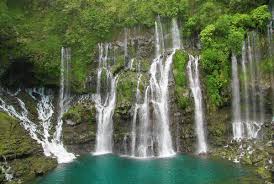The Republic of Guinea is bordered by Guinea-Bissau, Senegal, Mali, Côte d'Ivoire, Liberia and Sierra Leone.Guinea's main attraction to tourists is its relatively undisturbed countryside. Its landscape varies from mountains to plains and from savannah to forest and the three great rivers of West Africa (the Gambia, the Senegal and the Niger) all originate here.
The capital, Conakry, is located on the island of Tumbo and connected to the Kaloum Peninsula by a 300m- (984ft-) long pier. The city is well laid out, its alleys shaded by mangrove and coconut palm trees. Guinea has a strong music tradition and Conakry, in particular, is a dynamic centre for music. The singing of the Kindia people is especially renowned.
In 1958, when it declared independence from France and voted in a staunchly socialist one-party government, Guinea became an isolated and secretive country. However, after the death of the dictator Sekou Touré in 1984, Guinea began, slowly, to allow tourists.
The Republic of Guinea covers 245,857 square kilometres (94,926 sq mi) of West Africa, about 10 degrees north of the equator. Guinea is divided into four natural regions with distinct human, geographic, and climatic characteristics:
- Maritime Guinea (La Guinée Maritime) covers 18% of the country
- Middle Guinea (La Moyenne-Guinée) covers 20% of the country
- Upper Guinea (La Haute-Guinée) covers 38% of the country
- Forested Guinea (Guinée forestière) covers 23% of the country, and is both forested and mountainous
The population of Guinea comprises about 24 ethnic groups. The Fulas or Fulani (French: Peuls; Fula: Fulɓe), comprise 40% of the population and are mostly found in the Futa Djallon region. The Mandinka, also known as Mandingo or Malinké, comprise 26% of the population and are mostly found in eastern Guinea concentrated around the Kankan and Kissidougou prefectures.
The Soussou, comprising 11% of the population, are predominantly in western areas around the capital Conakry, Forécariah, and Kindia. Smaller ethnic groups make up the remaining 23% of the population, including Kpelle, Kissi, Zialo, Toma and others.[1] Approximately 10,000 non-Africans live in Guinea, predominantly Lebanese, French, and other Europeans.
I am proud to say that I am amix of Fulani, Mandinka and Kissidougou :)












